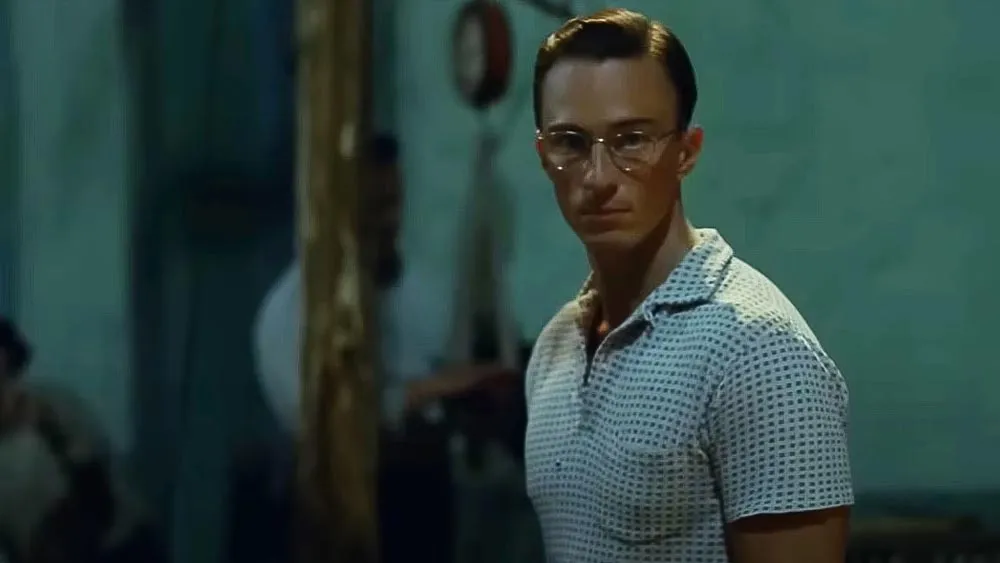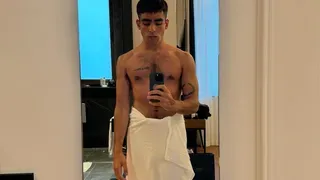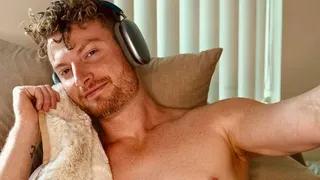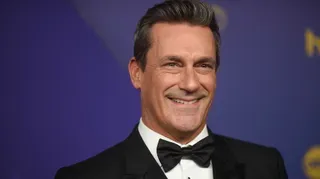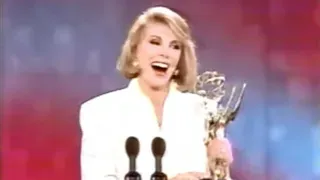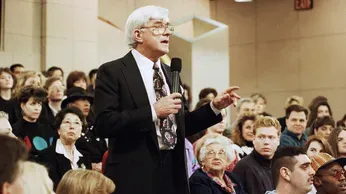
August 20, 2024
Phil Donahue, who Ruled Daytime Talk for Years Until Oprah Overtook him, Left a Lasting Imprint
Andrew Dalton READ TIME: 4 MIN.
For nearly two decades, Phil Donahue was virtually the only TV talk show host to roam his audience with microphone and make them an essential part of his show.
His huge cultural influence – especially with the women who tended to watch television during the day in his era – finally led to a flock of cultural imitators in the 1980s, including one who would eventually knock him off his perch.
"For a long time I wondered why it took so long for someone to copy us," Donahue told the Archive of American Television in 2001. "Then along came Oprah Winfrey. It is not possible to overstate the enormity of her impact on the daytime television game."
Donahue died Sunday at age 88 after a long illness.
"I lost my sweetheart last night," Donahue's wife, the actor Marlo Thomas, wrote on Instagram Monday, saying she would be stepping away from social media "to take care of myself and the many people who took care of Phil, and held him close to their hearts."
Winfrey, among those paying him tribute after his death, was always first to acknowledge his importance.
"There wouldn't have been an Oprah Show without Phil Donahue being the first to prove that daytime talk and women watching should be taken seriously," she posted on Instagram on Monday along with a photo of the two embracing. "He was a pioneer. I'm glad I got to thank him for it. Rest in peace Phil."
By the time "Donahue" went off the air in 1996 after 29 years, nearly 7,000 episodes and 20 Emmy Awards, the daytime television landscape was littered with lookalikes.
Winfrey, based in Chicago like Donahue, premiered in 1985 and overtook him for good in the ratings starting in the 1986-87 season, though Donahue often pointed out that she "raised all boats," lifting his ratings even while passing him.
Later the floodgates truly opened to imitators, most of them far trashier, including "The Jerry Springer Show" "Geraldo" and "Jenny Jones."
It was enough to make Donahue feel like he no longer belonged.
"The daytime arena changed, the ground moved under my feet," Donahue told The Associated Press in 2002, "and I was glad to leave."
Both before-and-after Oprah, the prematurely gray and always animated Donahue (Phil Hartman sent up his dramatic body language in a recurring "Saturday Night Live" impression,) wielded enormous clout, making daytime at once more serious, more newsy and more salacious as he emerged in the late 1960s amid a sea of game shows, soap operas, and more frivolous talk shows.
He demonstrated that daytime viewers, long before cable news, cared about world leaders, cultural figures and the debates of the day. He gave many Americans their first real exposure to issues like sexual harassment and abuse, gay marriage and AIDS.
"We're very, very proud of the way in which our program has reflected our culture since 1967," Donahue said at the taping of his final show in 1996. "In 1967, we never thought we would lose a war. In 1967, AIDS was a verb, or a plural noun. In 1967, you could harass your secretary and there was nothing she could do about it."
When "The Phil Donahue Show" debuted on WLWD-TV in Dayton, Ohio, it was not supposed to have an audience at all, but a crowd appeared expecting to see the variety show he was replacing, and producers decided to let them stay. During commercials, he opened the floor up to questions for his first guest, the atheist activist Madalyn Murray O'Hair, and soon decided the audience's questions were better than his.
"Sometime during that first week, I jumped off my chair and ran into the audience," he told The AP in 1996.
The program moved to Chicago in 1974, shortened its name to "Donahue" and was syndicated across the United States.
He took chances and welcomed controversy. He aired a birth in his first week. He televised an abortion in a later episode. He hosted a show on sexual abuse and Catholic priests decades before the topic rocked the church worldwide. He broadcast one episode from inside New York's Attica State Prison, and later fought in court to air an execution, but was denied by the U.S. Supreme Court.
Memorable "Donahue" guests included feminist activist Gloria Steinem, leftist provocateur Jerry Ruben of the Chicago Seven, Muhammad Ali and Ryan White, the boy who contracted AIDS at age 13 in 1984 and became one of the faces of the disease due in large part to his appearances on "Donahue."
The shows weren't always highbrow, though. He had episodes devoted to male strippers and female wrestlers when both were rare.
Phillip John Donahue was born on Dec. 21, 1935 in Cleveland, the son of an Irish Catholic furniture seller who said he had a Norman Rockwell youth of front lawns, baseball and church dances.
He had an entirely Catholic education through his 1957 graduation from the University of Notre Dame.
He married Margaret Cooney in 1958 and had five kids – Michael, Kevin, Daniel, Mary Rose and James – before they divorced in 1975. He met actor Marlo Thomas, the "That Girl" star of the 1960s who was a household name at the time and would later become a regular on "Friends," when she appeared on his show in 1977.
He later said it was love at first sight, and they did a poor job of hiding it on the air.
"You are really fascinating," Donahue told Thomas, grasping her hand. "You are wonderful," Thomas said back. "You are loving and generous, and you like women and it's a pleasure, and whoever the woman in your life is, is very lucky."
They married in 1980.
After years of lying low, he returned to television to be among the first hosts on MSNBC, who traded heavily on his name in its early promotion. His show premiered in July 2002 and lasted just seven months.
The network had yet to become the liberal counterpoint to Fox News' conservatism, and the left-leaning Donahue never felt supported.
"It took almost three years for Fox to overtake CNN," Donahue said in a statement after the show's cancellation. "We had six months."
He stayed semi-retired after leaving MSNBC, his media appearances mostly one-offs on talk shows and TV documentaries. His voice appeared as a caller needing psychologist's help on "Frazier" three times in 1999.
